Background
The United Kingdom is one of the nine countries possessing nuclear weapons. It is a very stable partner and supporter of U.S. security and is a permanent member of the United Nations Security Council. Britain is a member of the Five Eyes intelligence sharing alliance with the US.
In 2003, the Framework Memorandum of Understanding on Ballistic Missile Defense was signed between the governments of the U.S. and the U.K. and established patterns of cooperation on missile defense issues, especially on the field of research and development.[i] Also in that year, the United Kingdom formed its version of the Missile Defense Agency, named the Missile Defense Centre.
United Kingdom’s Ballistic Missile Defense Capabilities
| System | Operator | Number Deployed | Platform | |
| Upgraded Early Warning Radar | Joint U.S. and United Kingdom | One | Ground-based sensor | 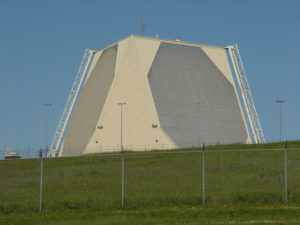 |
| Principle Anti-Air Missile System (PAAMS) (Sea Viper) | United Kingdom | Six | Type 45-class destroyers | 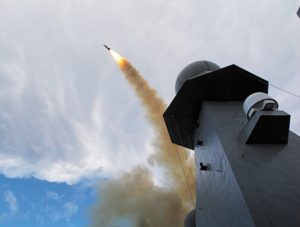 |
| S1850M Radar | United Kingdom | Six | Type 45-class destroyers |  |
| SAMPSON Radar | United Kingdom | Six | Type 45-class destroyers | 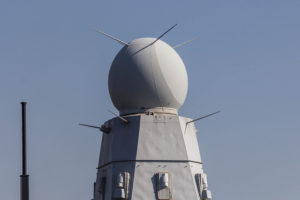 |
The country hosts an Upgraded Early Warning Radar (UEWR) in Fylingdales, for missile warning and space surveillance missions. In February of 2013, the British military allowed the United States to perform system (software and hardware) updates, without changes to the physical façade of the defense system, on the UEWR. Since 2007, the U.K. government has allowed the U.S. to use the satellite communication facilities at RAF Menwith Hill station to route data to the U.S. missile defense system.
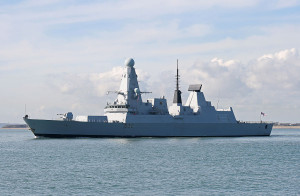
A Type 45 destroyer employed by the United Kingdom
The UK has effective theater-wide anti-ship missile defense capabilities because of its Type 45 destroyers, which are used to shield the British fleet from aerial attacks. Currently, the UK has deployed six total Type 45 destroyers.[ii] The anti-ship missile defense components of the Type 45 consist of the Sea Viper missile defense system, Sampson multi-functional radar, and the radar-controlled Phalanx Gatling gun, the latter serving as the last line of defense against incoming air and missile threats. The Sea Viper serves as the primary anti-ship missile defense tool for the Type 45 and provides all around protection against aerial threats up to 70 miles away. Interceptor missiles employed by the Sea Viper missile defense system are the Aster 15 and the Aster 30 that have ranges up to 20 and 75 miles respectively. The interceptor missiles are fired from Sylver missile-launching systems aboard the destroyer and work in tandem with the on-board Sampson radar, the Combat Management System, and long-range radar to identify, track, and intercept incoming aerial threats.
United Kingdom’s Air Defense Capabilities
| System | Role | Number Deployed | Platform | |
| Rapier FSC (Field Standard C) | Short-range air defense | Five batteries | Ground-based; road mobile | 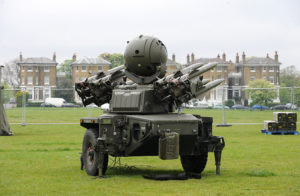 |
| Stormer High Velocity Missile (HVM) | Short-range air defense | Unknown | Ground-based; road mobile | 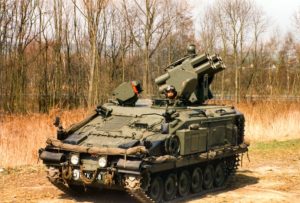 |
| Phalanx Gatling Gun | Sea-based/Short-range air defense | Six | Type 45-class destroyers | 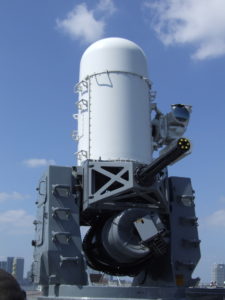 |
| Sea Wolf | Sea-Based/Short-Range Air Defense and Point Defense | Deployed on 13 Type 23 Frigates | Type 23 Frigates |  |
| Starstreak Missile System | Short-Range Air Defense | 3 Batteries of 36 Systems Each | Ground-Based; Road-Mobile | 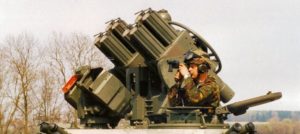 |
| Sea Ceptor | Short-Range Air Defense | Deployed on 1 Type 23 Frigate in the UK Royal Navy | Type 23 Frigates | 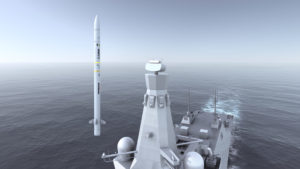 |
| Enhanced Modular Air Defence Solutions (EMADS) | Short-Range Air Defense | Unknown | Ground-Based; Road-Mobile | 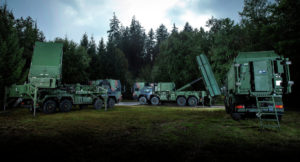 |
Current Developments
Cooperation continues between the U.S. and the U.K. on advanced technology programs or system-level analysis. Together with its American partner, it has created the European Phased Adaptive Approach, which is built on the principle that the U.K. will integrate its sensor systems with U.S.-based ships and missile technology in and around Europe, specifically with regards to both Navies.[iii]
In 2015, the United Kingdom—in response to increasing ballistic missile threats to its overseas territories and military bases—decided to investigate into the potential of Type 45 Destroyers to operate in a ballistic missile defense role. Recently, the Type 45 destroyers have begun integrated missile defense testing with the United States. Also in 2015, the United Kingdom moved to invest in a ground-based ballistic missile defense radar, which will be integrated into the NATO missile defense network to enhance its coverage and effectiveness.
In late 2016, government officials from Britain and France agreed to cooperate further on missile defense development, by implementing the Cross-Channel Centres of Excellence Strategy. This will establish specialized missile centers in hopes of improving defense innovation for both countries.[iv]
Japan and the United Kingdom announced, in November 2017, that their joint program to undertake research and development of a new air-to-air missile will transition to a prototype state in 2018.[v]
In December 2017, the United Kingdom announced its intent to deploy Israel’s Iron Dome system in the Falkland Islands as an added layer of protection.[vi]
On May 24, 2018, the United Kingdom’s Sea Ceptor missile system entered service with the British Royal Navy. Just days later, the British Army’s land variant, called Land Ceptor, shot down an aerial target in its first successful live test.
Recent News
- RapidRanger: What Is the Air Defense System Ukraine Will Buy for €2 Billion?
- British Defense Secretary says Ukraine will receive 100 air defense missiles from London in May
- The UK could need an Israeli-style Iron Dome air defense system, says former US national security advisor
- UK in talks to join Europe's Sky Shield aerial defence system
References
[i] https://2001-2009.state.gov/t/isn/rls/rm/39920.htm
[ii] https://www.royalnavy.mod.uk/the-equipment/ships/destroyers/type-45-destroyer
[iii] https://www.armscontrol.org/factsheets/Phasedadaptiveapproach
[iv] https://www.upi.com/Defense-News/2016/11/17/Officials-announce-missile-cooperation-between-UK-France/9461479410217/
[v] http://www.janes.com/article/75985/update-japan-uk-advance-missile-development-project
[vi] https://www.thejc.com/news/world/britain-to-deploy-israel-s-iron-dome-in-the-falklands-1.450425
